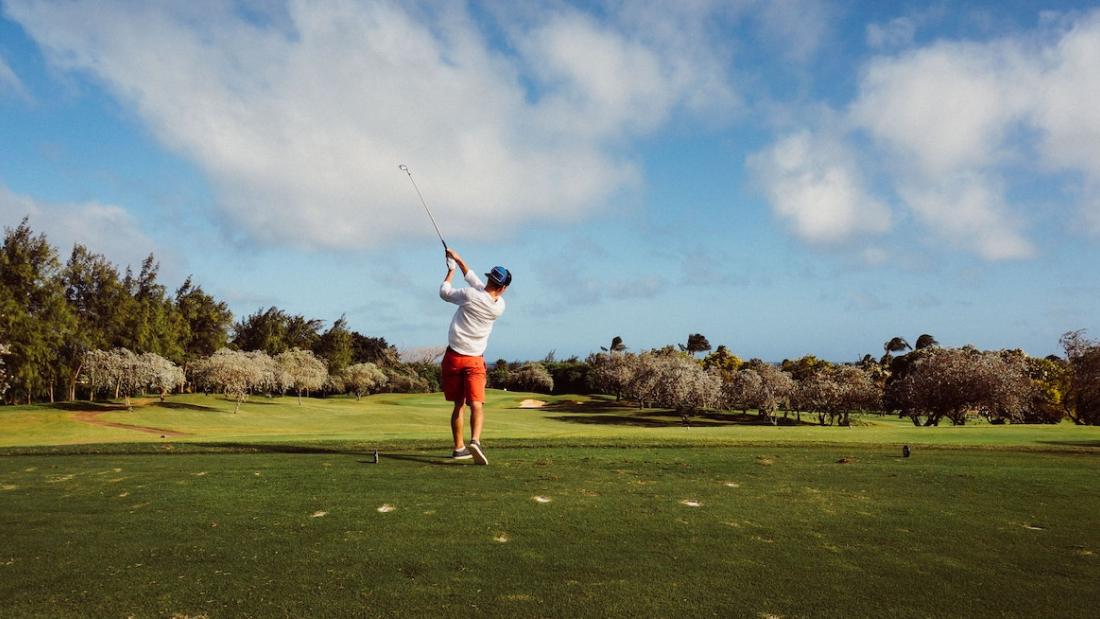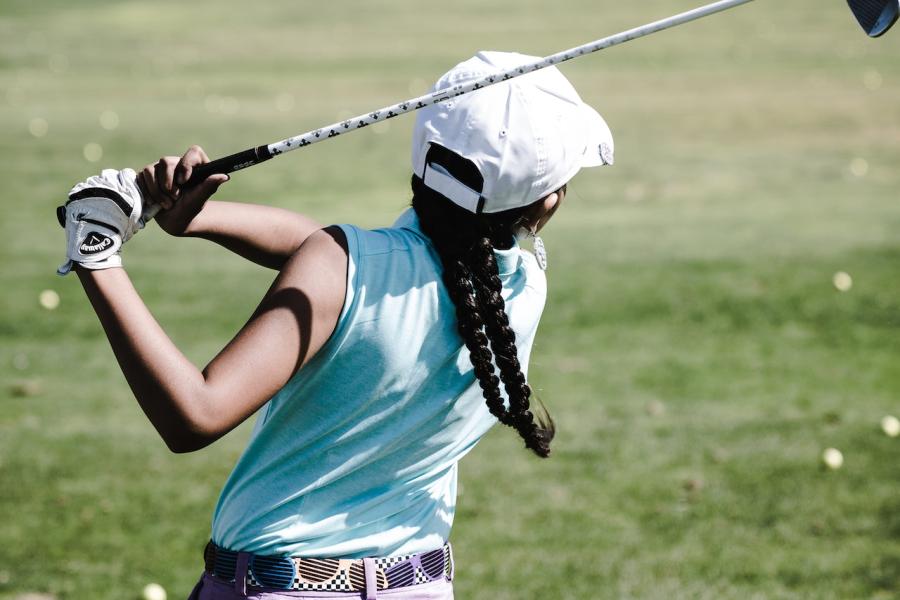“Like many sports, golf relies on a harmony between brain and body to translate the precise calculations made before each shot into a set of movements that propel the ball on its intended course.”
In a series of experiments designed to shed new light on the psychophysiological processes underlying human performance, IPEP researchers have been measuring brainwaves, eye movements, cardiac, muscular activity, and movement kinematics in the moments immediately before and during golf swings. Their findings have revealed new mechanisms and laid the foundations for new training interventions that are gaining increasing attention from golf’s elite.
Andy added: “Analyses of the brainwaves in the couple of seconds before movement revealed a sharp increase in activation at sensors overlying the frontal and central parts of the brain that are implicated in movement planning and control. At the same time, we saw a decrease in activation at sensors placed around the other areas of the brain. This suggests a concentration and rerouting of resources towards movement planning, and away from other processes, such as performance worries, before hitting putts. Most excitingly, this focal activation pattern was much stronger in expert than in beginner golfers, it intensified with practice, and when we retrospectively analysed good and bad shots, we found that the pattern was stronger before successful putts in comparison to unsuccessful putts”.
In other words, the brainwaves were related to the movement, and IPEP’s researchers were able to predict whether or not the ball was likely to go into the hole or not based on brainwaves before the ball was struck.
“This is really exciting and opens the possibility for neurofeedback training – where we use real-time feedback to allow golfers to understand their brainwaves, develop strategies to regulate them and learn to only initiate their swing when they are producing the pattern that is conducive to successful shots.”
The IPEP team is currently conducting this neurofeedback research in golf and other sports and the concept has already been used by some of the world’s best players including Team Europe’s Justin Rose and Brooks Koepka from Team USA. A BBC article Ryder Cup 2023: How putting can be improved by controlling brainwaves also featured this work.
Aside from the brainwaves, the research also revealed important patterns of eye-gaze behaviour and cardiac activity as additional ingredients for successful golf putts.
“Both beginner and expert golfers tended to fixate on the ball for a second or two before starting their putt, but the key difference was during the swing. The experts fixated on the ball during the swing and maintained a steady fixation on the same spot for up to a second after the ball was hit. In contrast, the beginners tended to jump with their eyes to track the moving ball. We found that keeping the steady fixation during the swing and immediately after the ball was hit helped more putts go into the hole. It is possible that having a steady eye throughout contact helped the golfers to achieve a good posture and a smooth execution.”
Andy added “We also saw a remarkable slowing of the heart in the 6-10 seconds before putts, with heart rate dropping by about 10 beats per minute in beginners and some 20 beats per minute in experts, with the lowest heart rate coinciding with the onset of the swing.”
This shows that a focused mind, a quiet eye and a calm heart appear to be key ingredients for great putts.
So what can golfers do to achieve these optimal psychophysiological states on the putting greens?
The team share some tips.
- Concentrate on the line and length that you want to hit the ball, while blocking out other senses and thoughts. “Our research found that reciting a simple instruction silently in the mind can help here – cues like crisp… or smooth… often work well for a golf swing”.
- Fixate on the ball before the swing and keep your eyes in place throughout the swing.
- Be very still in the moments before you plan to swing. A still stance, in combination with a steady eye-fixation and a simple swing thought, can help your heart rate to decrease.
- Squeeze your left hand when walking between shots. “This one sounds a bit wacky, but it is based on the science of how our brains are wired – squeezing the left hand can help to deactivate the left-hemisphere of the brain – something we recently demonstrated in another golf study. Based on our earlier research, we predict that a relatively quiet left-hemisphere can aid performance by reducing the chances of overthinking during putts.”
Andy concluded “While we hope our findings can help elevate the golf performance of the elite and the amateur alike, we also see this research as a foundation for new projects beyond sport.. e.g., to help our emergency responders to perform at their best when performing life-critical operations… or to help people with Parkinson’s to manage the motor symptoms of the disease to improve their quality of life.”


